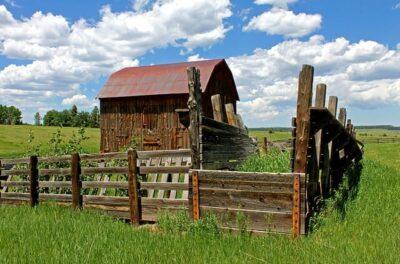The 21st century is an excellent time to be a homesteader. We have the best of both worlds, able to both draw from the wisdom of antiquity and still make use of cutting-edge technology.
Homesteaders today have the opportunity to raise our own food and provide for our own needs in the same ways our ancestors did — but unlike them, we are not completely dependent upon our success at raising crops and keeping livestock and harvesting firewood.
If severe weather, illness, family emergency, or other unfortunate events occur, it is not likely to result in the same level of crisis it would have for our forebears. If wildlife destroys the vegetable garden or a hog dies of disease or a cow goes dry, it probably does not create a risk of starving to death for most homesteaders today. And if an exceptionally cold winter empties the woodshed before spring, most of us are able to find an alternative that will keep us from freezing.
Modern homesteaders are fortunate to have an abundance of technology and skills available, but there is so much to choose from that it can be challenging to know when to lean one direction and when to lean the other. It is possible to achieve a nice equilibrium between the world of the past and the world of the present and future, and enjoy both eras by embracing the ability to choose.
Crazy Gadget Can Jump-Start Your Car — And Charge Your Smartphone!
It is helpful to think of new technology and old-time methods as a continuum with many possibilities in the gray area between the two ends, rather than simply a black-and-white view of all one or all the other. Locking ourselves into a rigid set of parameters reduces our ability to appreciate the best of both worlds. Instead, it is valuable to pick and choose, leaning further toward one end or the other in different aspects.
To do this, we need to first think about what made us become homesteaders in the first place. While self-sufficiency is the baseline definition for the lifestyle, there are a variety of reasons that we chose it. For some, it’s about resource conservation and planet preservation. For others, health and food sovereignty are key. Other reasons include saving money, honoring tradition, being prepared for a world where modern technology and resources might become less accessible, the desire to treat animals humanely, or for the intrinsic value of the skills themselves.
You may not be able to consider yourself a homesteader unless you raise meat animals, or make cheese, or heat with renewable fuels, or live completely off the electric grid. On the other hand, the thing that makes you feel like a homesteader might be nothing more than raising and canning your own tomatoes and keeping a couple of laying hens. Whatever it is you do that makes you a homesteader in your eyes, focus on that first.
If it is about having your own fresh eggs, for example, then do what it takes to make that happen and give yourself permission for guilt-free vegetable purchases at the grocery store. If your reason for homesteading is to reduce your carbon footprint, then it may be more important to live in a small home and practice diligent waste reduction than to raise dairy goats.
Another way to bring old-fashioned practices and modern technology together is to toggle back and forth depending upon the season. You can make butter when the milk is abundant and rich, but plan on buying it during parts of the year, or use your wood stove for heat and cooking in colder months but switch to other fuels during summer.
Modern technology is great, but bear in mind the importance of not becoming reliant upon it. Online recipes and GPS are great, yet it’s wise to maintain some access to hardcopy recipes and know how to use a map. Just in case. Most people store phone numbers and contacts in their phones and tablets, but it is useful to have some way to access the information we need in another format. Again, just in case. Remember that if homesteading is about self-sufficiency, it is counterproductive to be overly dependent on tools of any kind.
In combining modern technology and old-fashioned ways, the absolute litmus test must be this: Who or what is in charge? Make sure you own your technology, rather than the other way around. Go ahead and use modern technology when it serves you, but be careful that you do not end up serving it. When the latest electronic gadget enhances your ability to accomplish homesteading in the way that is most meaningful to you, use it. But if it takes away from your goals or raison d’etre, let it go.
As long as we use the best and leave the rest from both ends of the spectrum, we can effectively meld the best of antiquity and the best of today’s technology in a way that allows us to maximize our homesteading enjoyment and success.
What do you think? Share your thoughts on balancing new technology and old-time methods in the section below:
 Off The Grid News Better Ideas For Off The Grid Living
Off The Grid News Better Ideas For Off The Grid Living





